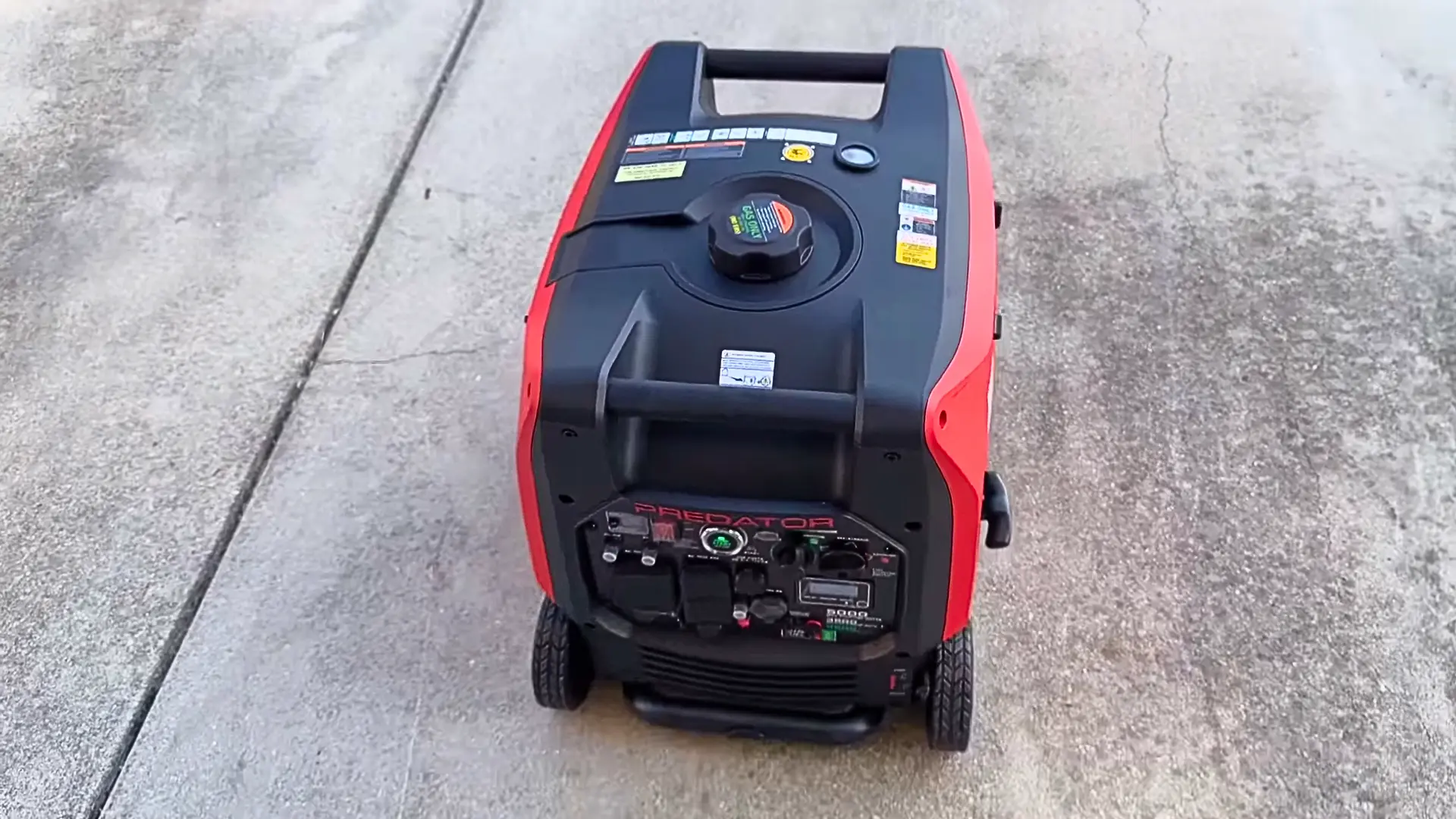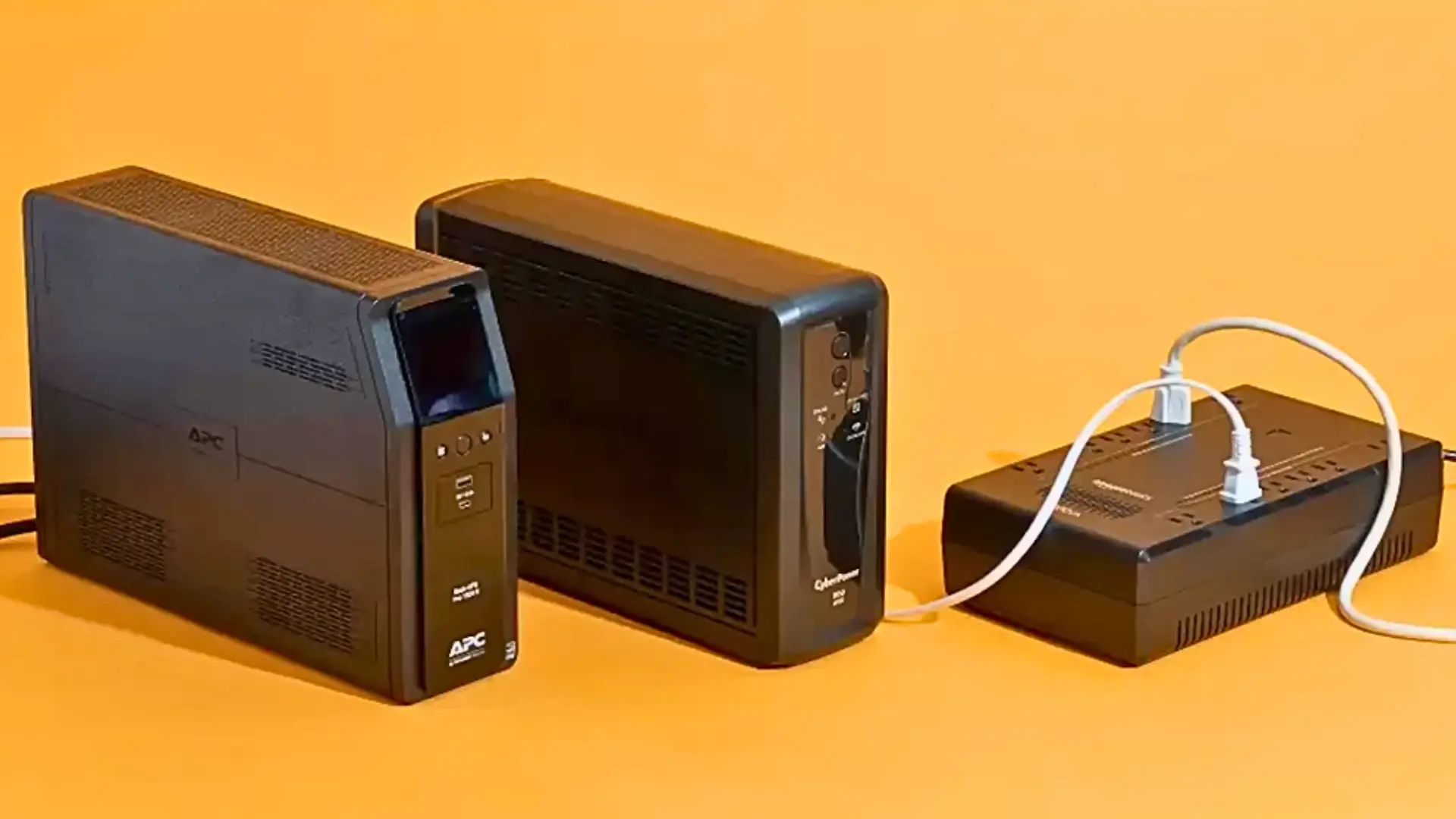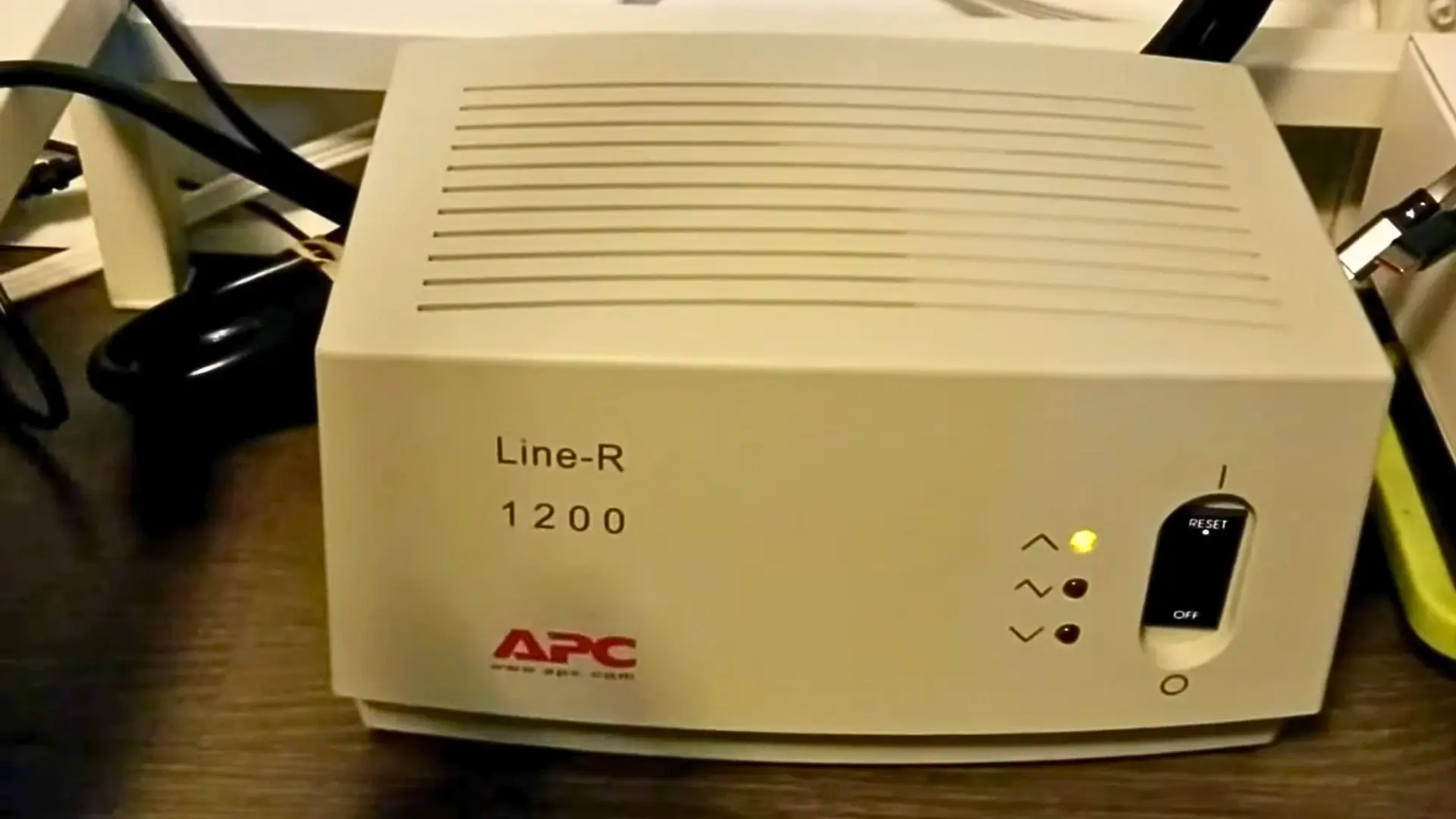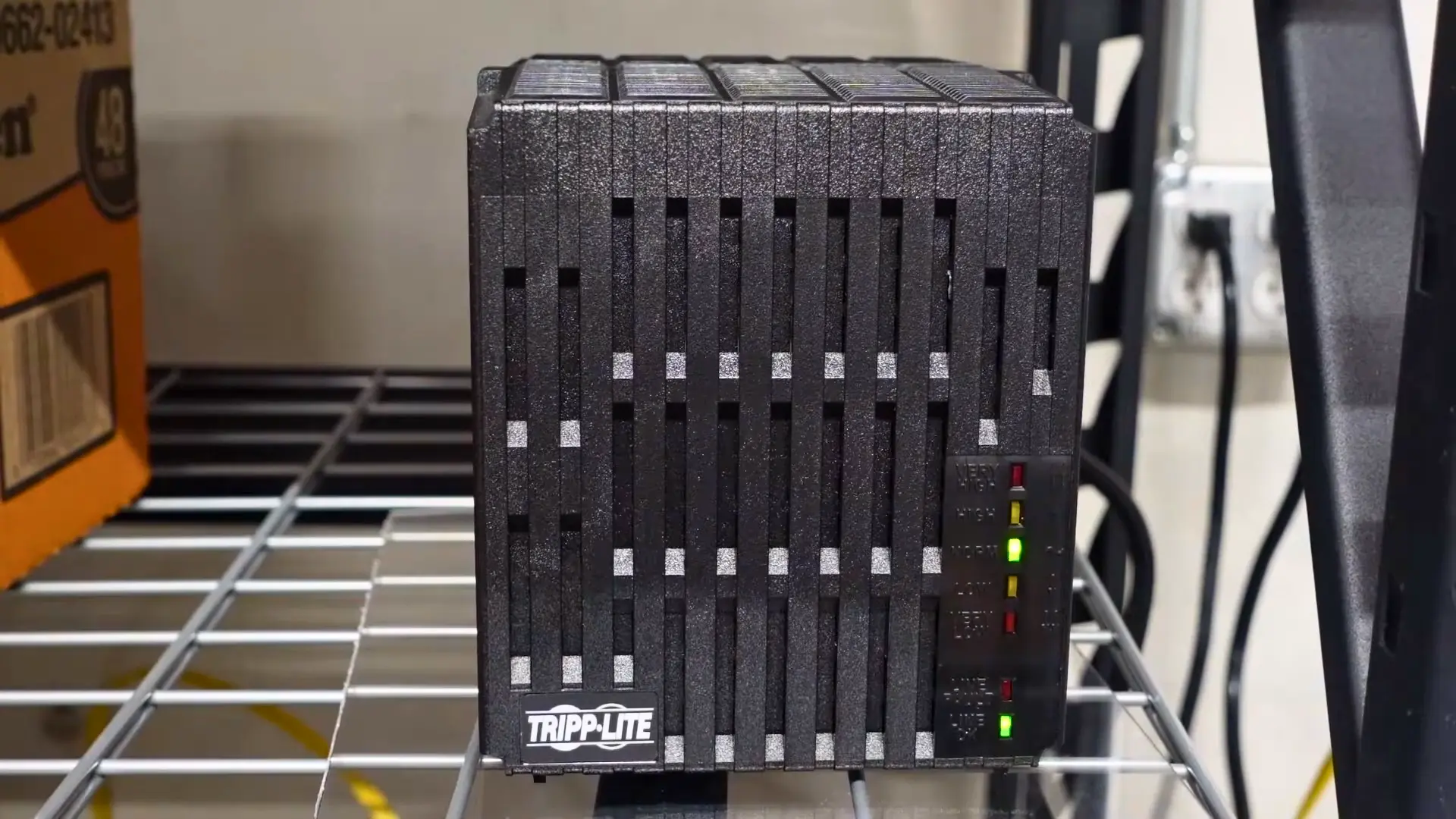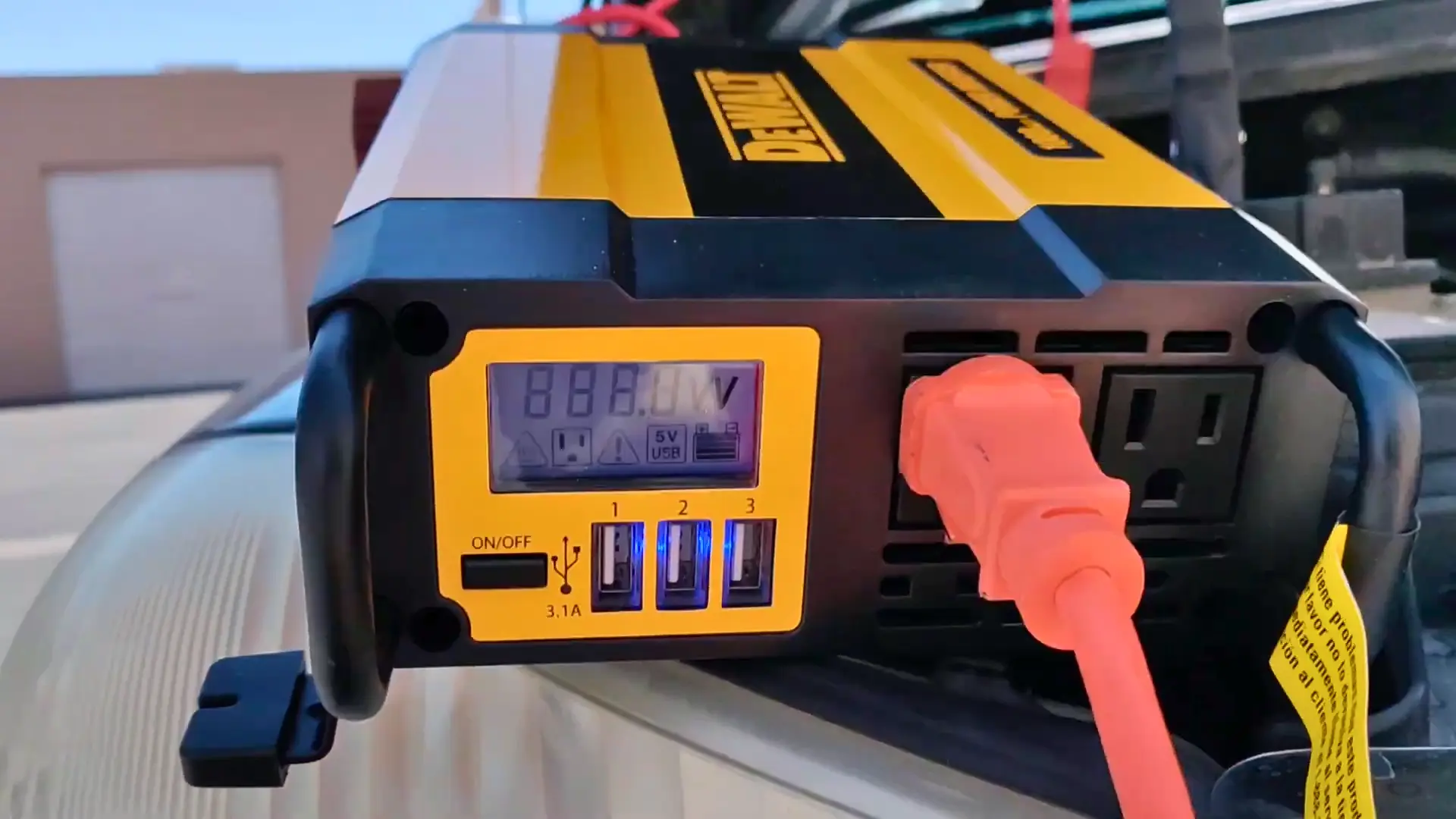The older models of open-frame generators often lack modern automatic voltage regulators (AVRs), which are crucial for ensuring that only clean and safe electrical power is distributed throughout your home. Without these AVRs, your voltage-sensitive appliances, such as computers and televisions, could be at risk of damage.
Furthermore, the operational efficiency of motor-driven devices like sump pumps and fans may also be negatively impacted by these outdated generators.
This post is designed to offer six methods for immediate solutions to purifying the power output of your generator. Let’s dive in and discover the secrets to cleaning up generator power.
What is Dirty Power?
Dirty power is a type of electrical pollution that can damage sensitive electronic equipment. It is caused by many factors, including equipment malfunctions, power line problems, and bad wiring.
Dirty power can cause several problems for electronic equipment, including data loss, hardware damage, and system crashes. It can also cause interference with other electronic devices, making them work less efficiently or not at all.
On the other hand: Clean power refers to electricity that is smooth and steady, without sudden spikes or drops in voltage, which are known as voltage ripple. In a slightly different sense, clean power, often called green energy or green electricity, is generated using methods that rely on renewable energy sources and do not contribute to pollution.
So, How to Clean Up Generator Power?
The key to obtaining clean and consistent power from a generator hinges on its ability to produce alternating current effectively. This is primarily determined by the quality of the generator’s internal inverter and its voltage regulation mechanisms.
Understanding this, there are six (6) practical approaches to address the issue of a generator producing ‘dirty’ power. These solutions are:
- Switch to an Inverter Generator
- Utilize an UPS (Uninterruptible Power System)
- Implement a Separate Voltage Regulator
- Apply a Power Line Conditioner
- Employ a stand-alone Inverter
- Install a Clean Power Filter
1. Switch to an Inverter Generator
Inverter generators produce electricity in three phases: they first generate alternating current (AC), convert it to direct current (DC), and then convert it back to a cleaner AC output. This process smooths out the power fluctuations commonly seen in standard generators.
These generators are generally quieter, more fuel-efficient, and produce power with extremely low harmonic distortion (THD), making them ideal for sensitive electronics like computers and medical equipment.
Inverter generators are designed to provide pure sine wave output, which is essential for powering voltage-sensitive appliances. This capability is crucial in preventing potential damage and avoiding expensive repairs in the future.
Moreover, some people’s questions arise Honda generators safe for electronics. Honda generators are generally considered safe for electronics. Honda is known for manufacturing high-quality inverter generators that produce clean and stable power output.
Back in 1998, Honda developed something pretty cool technology. It’s called the Microprocessor-controlled Sine Wave Inverter. It makes the electricity from the generator super clean and smooth.
This means you can use it to power your whole houses regular electric stuff without worrying about any problems. It’s like having a good quality power source tailored to whatever you need.
2. Utilize UPS (Uninterruptible Power System)
A UPS provides a buffer between your generator and your devices. It contains a battery that keeps power steady and uninterrupted during fluctuations or outages.
Besides cleaning up the power from the generator, a UPS also offers surge protection and can provide emergency power for a short time during a total power outage.
It’s important to choose a UPS with a capacity that matches your power needs. A mismatch can lead to inefficiencies and costly repairs. Always check their specifications for compatibility to avoid potential issues. Also, regular maintenance of the UPS battery is essential for reliable performance.
3. Implement a Separate Voltage Regulator
A voltage regulator maintains a constant voltage level for your devices, compensating for fluctuations in the power supply.
This is crucial for the longevity and safe operation of electrical equipment, especially in areas with unstable power grids.
Make sure that the separate voltage regulator (VR) or automatic voltage regulator (AVR) you select is compatible with your generator. It’s important to verify this match to avoid any operational issues. This installation of a voltage regulator should be done by a professional.
4. Apply a Power Line Conditioner
A power line conditioner, known for being a cost-effective solution, is designed to stabilize the voltage output produced by an older traditional generator.
They ensure a cleaner and more consistent power supply, which is vital for sensitive and high-precision electronic equipment.
Power line conditioners vary in size and capacity, so choosing one that fits your power requirements is important.
The primary limitation of this approach is that it doesn’t address the issue of modified sine waves commonly produced by many open-frame generators. Consequently, there remains a risk that your appliances might still be exposed to unrefined, or ‘dirty’, power.
5. Use Stand-Alone Inverter
Investing in a standalone inverter is a wise choice if you don’t own an inverter generator. This device will transform the DC output into an AC output, producing smoother sine waves. This results in cleaner power delivery, ideal for your voltage-sensitive appliances
Additionally, a standalone inverter helps to regulate the generator’s RPM under load demand, which can lead to reduced fuel consumption and cost savings.
However, it’s important to note that standalone inverters can be less efficient, consuming more power themselves and leaving less available for your appliances.
This might require the use of a larger generator to compensate for the power loss. Given these considerations, opting for an inverter generator might be a more straightforward and efficient solution, eliminating the need for additional connections and the extra expense of a standalone inverter.
The inverter’s capacity should match the generator’s output, and it should be installed following safety standards.
6. Install a Clean Power Filter
While this method is a cost-effective option to stabilize voltage and reduce electromagnetic interference to a certain degree, it does not offer a comprehensive solution like the latest model generator, UPS, inverter, etc.
Graham-Stetzer Meter: Use a Graham Stetzer meter, a common device that measures dirty electricity during the generator running in your home’s wiring. The meter displays readings in Graham Stetzer (GS) units. Ideally, readings should be under 50 GS units, but it’s rare to achieve this.
Homes with readings below 200 GS are generally considered safe. If your reading exceeds 200 GS or maxes out at 2,000 GS units, you should install power filtering or the above-mentioned methods.
AM Radio: An AM radio can serve as a simple and effective Electromagnetic Interference (EMI) detector. Tune the AM dial from 500KHz to 2MHz, and observe changes in static. This radio can detect changes in the electromagnetic surroundings, simply a handy tool for identifying electrical issues in your home.
There Are Some Leading Causes of Dirty Power
Contaminated Fuel: This blocks the smooth flow of fuel, leading to irregular RPMs and fluctuating voltages.
High THD Levels in Generators: Generators with more than 15% Total Harmonic Distortion (THD) levels may not provide clean power, particularly to voltage-sensitive appliances.
Overload: Do not overload your generator by trying to power devices or appliances that exceed its rated capacity. Overloading can strain the generator and lead to distorted power output. Always check the generator’s wattage capacity and connect only the devices that fall within that range.
For example, a generator with 4,500 starting watts and 3,000 running watts should not exceed these limits.
Faulty Electrical Lines: Broken or malfunctioning electrical lines can be hazardous and damage appliances. It’s important to repair any sparking lines promptly.
Burnt or Overused Engine Oil: This can damage internal engine components, weakening them and affecting their ability to maintain constant RPMs or voltage.
Dirty or Faulty Spark Plug: A compromised spark plug affects ignition in the combustion chamber, leading to strange sounds and highly fluctuating voltages.
Defective Generator: Issues with components like the Automatic Voltage Regulator (AVR) or capacitors in a generator can be a significant cause of dirty power.
Dirty Internal Components (Carburetor, Air Filter, etc.): These components are essential for a stable power supply. A dirty carburetor or air filter disrupts the air-fuel mix, leading to unstable power.
Why Should You Clean the Generator’s Power?
Generators are a great way to provide power during an outage, but it’s important to make sure the power they’re providing is clean. Dirty power can damage sensitive electronics and cause problems with appliances.
- Protection for Voltage-Sensitive Appliances
- Optimal Performance of Motorized Devices
- Avoidance of Circuit Tripping
- Preventing Heat and Vibration Damage
- Maintaining Power Factor
Protection for Voltage-Sensitive Appliances: Devices such as systems, mobile phones, and laptops are highly susceptible to voltage fluctuations. Ensuring a clean power output from your generator can significantly reduce the risk of damage to these sensitive appliances.
Optimal Performance of Motorized Devices: Motor-driven equipment like sump pumps and fans depend on consistent power supply for efficient operation. Dirty power can hinder their performance, preventing them from operating at full capacity.
Avoidance of Circuit Tripping: Frequent circuit tripping can be a sign of unclean power. By maintaining a clean power output, the likelihood of disruptive tripping is significantly reduced.
Preventing Heat and Vibration Damage: Unclean power can cause appliances to emit unusual heat and vibrations, which can lead to wear and tear or even permanent damage.
Maintaining Power Factor: A lower power factor indicates inefficiency in power usage, and in some cases, it can lead to certain appliances not functioning at all. Cleaning your generator’s power helps maintain a higher power factor, ensuring all appliances work as intended.
Few Symptoms of Poor Power Quality
- Lights are displaying intermittent flickering.
- Voltage instability leads to fluctuations.
- Reduced power factor, indicating inefficiency.
- Frequent circuit breaker trips.
- Excessive heating of electrical appliances.
- Decreased performance in motor-driven equipment.
- Inefficient operation of appliances, such as a well pump drawing less water than normal.
- Unusual vibrations and noises emanate from electrical devices.
- Unexpected Equipment Shutdowns
- Increased Energy Costs
- Damage to Sensitive Electronics
Intermittent Flickering of Lights: A noticeable, often sporadic flicker in lighting systems can be an early sign of power instability.
Voltage Fluctuations: unstable voltage levels manifest as sudden dips or surges, which can be harmful to electrical devices.
Reduced Power Factor: A lower power factor indicates a reduction in the efficiency of electrical power usage, often requiring more power to perform the same tasks.
Frequent Tripping of Circuit Breakers: An increased occurrence of circuit breakers tripping indicates an underlying issue with the power supply or electrical circuits.
Overheating of Electrical Appliances: Appliances become unusually hot during operation, a symptom that could point to excessive power consumption or electrical faults.
Diminished Performance of Motor-Driven Equipment: Motors operating at noticeably lower speeds or with reduced efficiency, potentially due to inconsistent power supply.
Inefficient Appliance Operation: Devices like good pumps demonstrate decreased effectiveness, such as drawing less water than usual, indicating they are not receiving adequate power.
Audible Noises and Vibrations from Electrical Devices: Uncommon sounds or vibrations emanating from appliances can be a sign of electrical components struggling with poor power quality.
Unexpected Equipment Shutdowns: Devices or systems shut down unexpectedly, possibly due to power supply issues.
Increased Energy Costs: A noticeable rise in energy bills without a corresponding increase in usage, potentially caused by inefficient power consumption due to poor power quality.
Damage to Sensitive Electronics: Recurring issues or failures in sensitive electronic equipment, which can be particularly vulnerable to power quality issues.
Other Hand
If your power supply is still fluctuating, check your generator properly. Loose or damaged wires can cause this problem. Also, dirt in the engine reduces its power. Remember to change oil filters regularly to keep your generator working well. Proper maintenance can prevent many issues.
Conclusion
All the above methods represent the best practices in the field. If you find yourself uncertain about which route to take, my advice as a mechanic, drawing on extensive experience, is to consider investing in a new generator.
Ultimately, the decision rests with you. Opting for a new generator might be the optimal choice, but rest assured, the methods we have provided above are also effective and can be successfully applied to your situation.
By taking these measures, you can enjoy the benefits of a portable generator while ensuring clean and stable power for your electrical needs.
FAQs
Why is Cleaning up Generator Power Essential?
Cleaning generator power is crucial to protect sensitive electronics like computers and medical equipment from voltage fluctuations. It ensures the safe and efficient operation of these devices, extends their lifespan, and reduces the risk of operational failures.
Can Regular Maintenance Improve a Generator’s Power Quality?
Yes, regular maintenance such as cleaning the carburetor, changing engine oil, and checking spark plugs, can significantly improve power quality. It prevents issues leading to ‘dirty’ power, such as voltage fluctuations and unstable RPMs
Which Generators Produce Clean Power?
Inverter generators are known for producing clean power. They use advanced electronics to convert the raw power generated by the engine into a stable and consistent AC power output. This process results in a clean sine wave that closely resembles the power supplied by the electrical grid.
Inverter generators are designed to deliver power with low total harmonic distortion, usually below 3%, making them ideal for powering sensitive electronic devices such as laptops, smartphones, and other appliances that require clean and stable power.
Is an Inverter Generator a Good Investment for Clean Power?
An inverter generator is a good investment if you need clean, stable power for sensitive electronics. These generators produce power with low THD, are fuel-efficient, and operate quietly, making them ideal for delicate devices, despite their higher cost compared to traditional generators.
What Does It Mean to Have Clean Power From a Generator?
Clean power refers to the quality of electricity produced by a generator It is characterized by a stable voltage and frequency, low total harmonic distortion, and a steady sine wave. Clean power is essential for powering sensitive electronic devices without risking damage or malfunctions.


